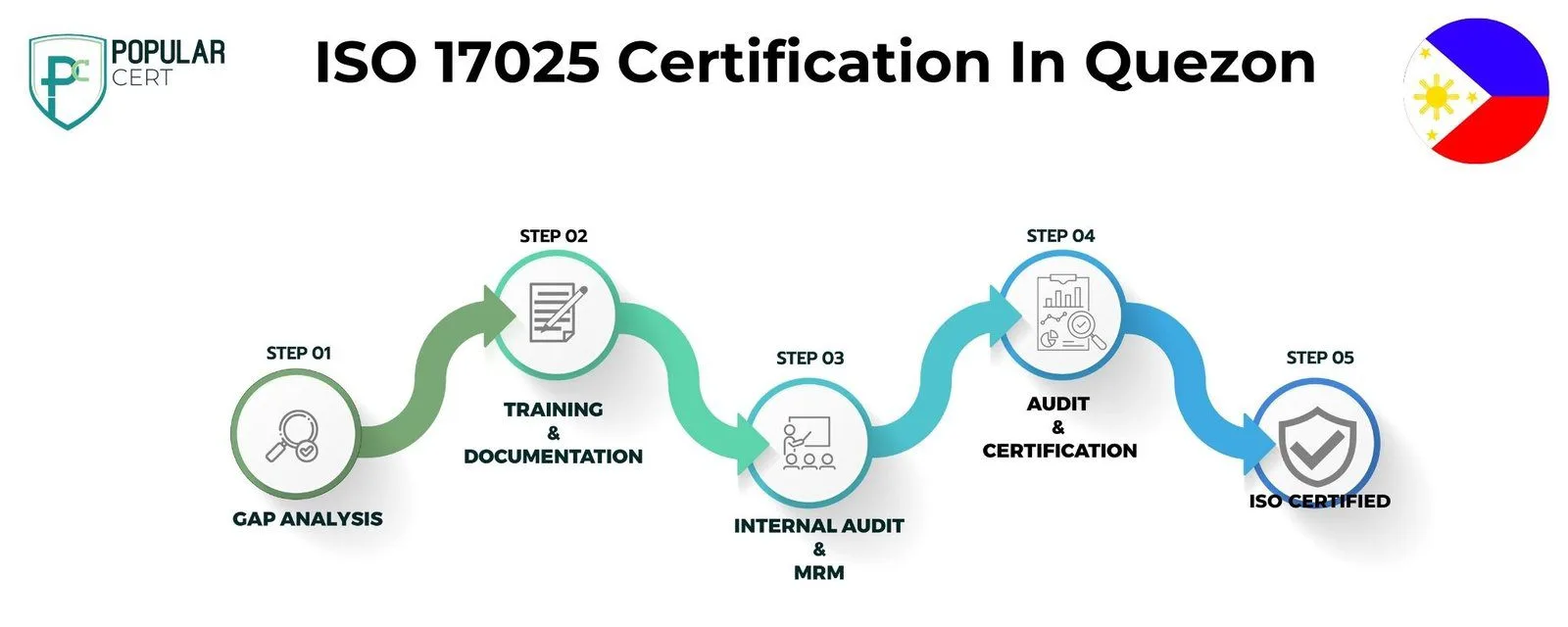ISO 17025 Certification In Quezon
Get Free Consultation
PopularCert offers professional ISO 17025 certification services in Quezon, supporting testing and calibration laboratories in achieving international competence and consistency. ISO 17025 certification in Quezon demonstrates technical accuracy, reliable results, and compliance with global benchmarks. Serving areas such as Cubao, Diliman, and Kamuning, we assist laboratories with system implementation, internal audits, and documentation aligned with ISO/IEC 17025:2017 standards. PopularCert also integrates support for related frameworks like ISO 9001 (Quality Management) to enhance overall laboratory efficiency and global recognition.
What is ISO 17025 certification?
ISO 17025 certification is a global standard for testing and calibration laboratories, ensuring they operate with technical competence and produce accurate, reliable results. This certification covers lab management and quality systems, helping labs meet international requirements, enhance credibility, and improve consistency. It is essential for labs aiming to deliver trustworthy testing and calibration services worldwide.
Why Is ISO 17025 Certification Important in Quezon?
- ISO 17025 certification is vital for laboratories in Quezon as it guarantees the accuracy and reliability of testing and calibration results. This certification helps labs maintain high technical standards and ensures their methods meet international benchmarks. For businesses and consumers in Quezon, this means increased confidence in the quality of products and services tested by certified labs.
- Beyond enhancing credibility, ISO 17025 certification supports continuous improvement within laboratories by promoting efficient management systems and adherence to best practices. It also opens doors to global markets by meeting international regulatory requirements. For Quezon’s labs, this certification is a valuable asset that fosters trust, supports business growth, and strengthens the overall quality infrastructure in the region.
How to Get ISO 17025 Certification In Quezon?

Process to Get ISO 17025 Certification In Quezon
Consultation and Gap Analysis
PopularCert’s experts evaluate your organization’s specific requirements and current laboratory management system. A comprehensive gap analysis is conducted to identify areas that need improvement to align with ISO 17025 standards.
Planning, Documentation, and Policy Development
Based on the gap analysis, we develop a tailored implementation plan, define resource requirements, and assist in creating essential policies and documentation. These are seamlessly integrated into your laboratory’s operational framework to ensure compliance.
Training and Awareness
We provide in-depth training to ensure your team understands ISO 17025 requirements and their roles in maintaining an effective laboratory management system.
Internal Audit and Management Review
Our team conducts internal audits to assess system effectiveness and address any non-conformities. A management review ensures the system aligns with ISO 17025 standards and your laboratory’s quality objectives.
External Certification Audit and Certification
After successfully passing the external audit by an accredited certification body, your laboratory will receive ISO 17025 certification. This demonstrates your commitment to technical competence, accurate test results, and continuous improvement, enhancing trust and credibility in your laboratory’s services.
Benefits of ISO 17025 Certification in Quezon
- Improved Accuracy and Reliability: ISO 17025 ensures that laboratories follow standardized procedures, resulting in accurate and consistent testing and calibration results.
- Enhanced Credibility: Achieving ISO 17025 certification boosts the laboratory’s credibility, demonstrating technical competence to clients, regulators, and other stakeholders.
- Compliance with International Standards: The certification aligns laboratories with global best practices, ensuring compliance with international standards, which is crucial for conducting tests and calibrations accepted worldwide.
- Increased Customer Confidence: ISO 17025 certification assures clients of the laboratory’s commitment to quality, fostering trust and long-term business relationships.
- Efficient Use of Resources: By streamlining processes and adopting standardized procedures, laboratories can minimize waste, reduce errors, and maximize resource efficiency.
- Improved Risk Management: The standard helps identify and manage potential risks to testing processes and results, reducing the likelihood of costly mistakes.
- Enhanced Competitive Advantage: ISO 17025 certification sets laboratories apart from competitors, opening doors to new clients and partnerships by demonstrating a commitment to quality.
- Ongoing Process Improvement: The certification process promotes a culture of continuous improvement, encouraging laboratories to refine their operations and maintain high-quality standards.
- Regulatory Compliance: ISO 17025 assists laboratories in meeting industry-specific regulatory requirements, reducing the risk of non-compliance and penalties.
Types Of ISO Certification In Quezon
Get Free Consultation
Our Clients


















Cost of ISO 17025 Certification in Quezon
The cost of ISO 17025 certification in Quezon depends on your laboratory’s current practices, staff size, and the complexity of testing and calibration services. Many businesses actively search for affordable ISO 17025 consultants in Quezon to ensure a smooth and cost-effective certification process. Achieving this standard boosts your lab’s credibility and opens doors to global recognition.
Key factors that affect ISO 17025 pricing include:
- Scope of laboratory testing or calibration services
- Number of personnel and locations involved
- Existing quality management system
- Gap analysis and documentation needs
- Chosen certification body and audit duration
Working with the best ISO 17025 consultants in Quezon, like PopularCert, ensures a tailored approach and long-term compliance success.
Why Choose PopularCert for ISO 17025 Certification in Quezon?
For businesses seeking ISO 17025 certification Quezon, PopularCert offers expert support tailored to the needs of local testing and calibration labs. Our team simplifies the ISO 17025 accreditation process in Quezon, ensuring your lab meets international quality and competence standards. Whether you’re a new lab or expanding, our consultants help align your systems with regulatory requirements and client expectations.
Why labs in Quezon prefer PopularCert:
- Deep knowledge of ISO 17025 for testing labs in Quezon
- Personalized implementation and training support
- Fast, efficient, and affordable service
- Trusted ISO consultants in Quezon
- Improves lab reliability and customer confidence
Let your lab stand out with a globally recognized certification.
GET A FREE CONSULTATION NOW
FAQ
What is ISO 17025 Certification ?
ISO 17025 certification is an international standard for testing and calibration laboratories, ensuring they operate with technical competence and generate reliable, accurate results through proper management and standardized processes.
How can my organization achieve ISO 17025 Certification?
Your organization can achieve ISO 17025 certification by implementing a compliant management system, conducting a gap analysis, developing necessary documentation, training staff, performing internal audits, and passing an external certification audit.
What are the benefits of ISO 17025 Certification for businesses?
ISO 17025 certification enhances credibility, improves accuracy and reliability, ensures regulatory compliance, boosts customer confidence, increases operational efficiency, mitigates risks, and provides a competitive advantage by demonstrating technical competence.
How long does it take to obtain ISO 17025 Certification?
Ordinarily, it takes around 6 to 8 weeks to get certified. This timeline can vary based on how big the group is and how ready they are. Popularcert works hard to provide fast certification and the needed papers for business purposes.
